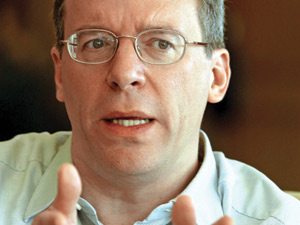
[miningmx.com] – ONE of the arguments for executive remuneration is the high stakes game top dogs play. Brief is the breath of a CEO if the business isn’t going well because shareholders tend to oust the unsuccessful in double-quick time.
This was particularly true of the mining sector where, according to a report by consultancy, PwC, nearly half of all CEOs at 40 of the world’s highest valued mining companies lost their jobs between 2012 and 2013.
“In 2013, the top 40 CEO was still awake at night. Another seven (18%) of the Top 40 changed leaders and almost all of them were in the top 20 companies,’ said PwC in its report. “This means almost half of the companies that have been in the top 40 over the past two years have hired a new CEO since 2011 – an incredible statistic’.
PwC also calculated that the average tenure of a CEO managing a so-called diversified mining company – such as Johannesburg-listed stocks like Anglo American or Glencore – was about six-and-a-half years. Working that back, it means the casualties from the executive class were appointed at the peak of the mining market at a time when nothing could go wrong. Right?
The corollary is that new appointments today at the likes of Anglo American (Mark Cutifani), BHP Billiton (Andrew Mackenzie) and Rio Tinto (Sam Walsh) – who not coincidentally are on average older and have stronger technical backgrounds than their predecessors – are likely to find the going somewhat easier because the mining sector has bottomed out.
If you were invested in mining stocks over the past two years, and your prediliction was for blue chip companies, you really ended up crying in a bucket.
The market valuations of the top 40 mining companies globally fell a staggering 23% over the 12 months of PwC’s survey, and cash flow dried up to a trickle.
Interestingly, the constitution of the top 40 mining companies also changed with more companies from emerging markets – such as Saudi Arabia and Russia – entering the top echelon.
The acid test for investment returns is return on capital employed or ROCE, a ratio which does a better job of showing how well a company has fared than just profitability since it demonstrates how well a company deployed its capital. After all, in these economically constrained times, investors want to know that the capital they provide to management is being used well.
For the mining sector, ROCE hit a ten-year low by December 2013 at some 5% after adjusting for impairments – a level even lower than in the 2009 financial crisis where it was only 10%, according to PwC.
It’s easy to see now why Anglo’s Cutifani has promised shareholders a ROCE of at least 15% (against 9% for the financial year in which he joined the company), and most recently said a 20% return was possible, although he was reticient to put a time on when that would be achieved.
Times are a-changing, however. According to a recent presentation by Glencore at the Bank of America Merrill Lynch mining and minerals conference, the HSBC Global Index was 2% higher for the year to April and on a par with Stoxx Global 1800, also 2% higher.
PwC also believed the market is slowly turning for mining stocks. “Despite the overall performance during the year, it appears the mining industry was finally able to stabilise the growing disconnect to the broader markets which widened over the prior two years,’ it said.
“Starting in mid-2013, the mining industry began trending in line with the performance of the broader markets. This trend continued into the first four months of 2014, but a significant gap still remains,’ it said.
Part of the reason for the improvement is that mining companies responded to investor demands for improved yield which, as with ROCE, is a call for demonstrable returns, in this case, improved dividends especially if capital appreciation through share prices was not possible.
Based on the December 2013 market capitalisations of the top 40 companies, the aggregate dividend yield was 4% which PwC said provided a relatively attractive investment. Sibanye Gold, the popular Johannesburg gold stock which markets itself as strongly a yield company, has been offering a dividend yield of 6%, especially before its share price appreciated.
Over the last five years, the top 40’s dividends have almost tripled to $41bn even though the profitability of the companies has been eroding which is another clear sign of investor power.
“On an aggregate basis, total dividends of $41bn are double the total net profit of the top 40 of $20bn with five of the top 40 companies making up more than 50% of the total 2013 dividends paid,’ PwC said.
If there’s a return of optimism in the mining sector, it must be underpinned by the fact China’s economy continues to grow albeit at a slower level – 7% to 8% – than in the heydey that popularised the term “commodities supercycle’. Given the cutback in expansionary projects, the seeds of the supply deficit are being sown, some mineral economists say.
“Despite volatility, the industry is still supported by overall long-term demand fundamentals, specifically from emerging markets, particularly China,’ said PwC.
“The recent stabilisation of the mining index since the second half of 2013 may indicate that the confidence crisis is finally over and investors are starting to contemplate a return to the mining sector,’ it said.










